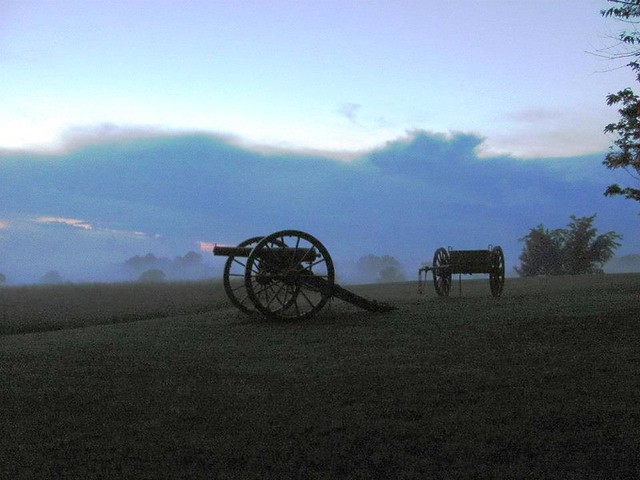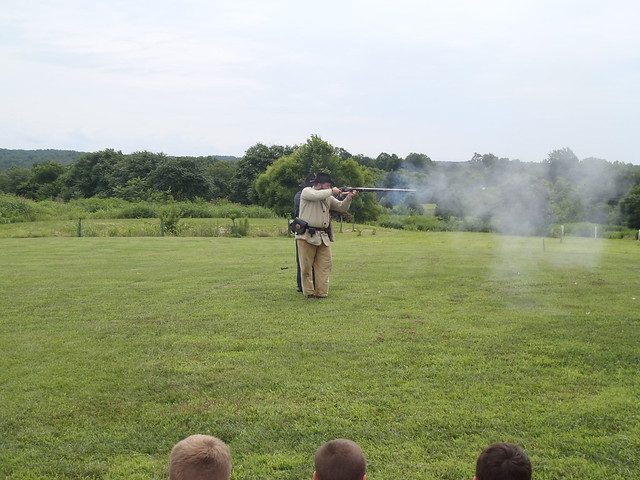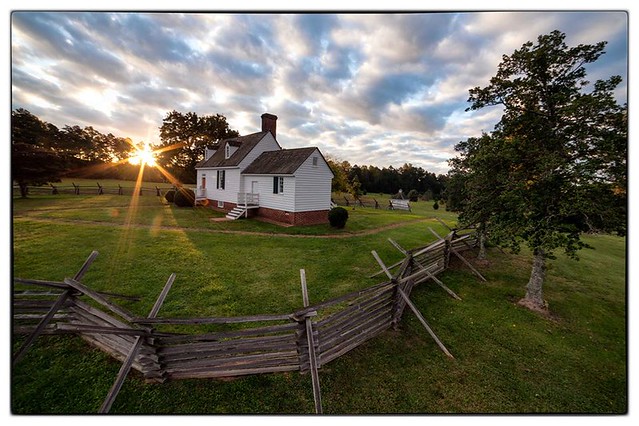Open fires are prohibited throughout the park from midnight to 4 p.m. through April 30 per the 4 p.m. Burning Law. This includes wood and charcoal. Gas is permissible. Campground fires are allowed during the restricted time if a camp host is on duty and signage to that effect is posted in the campground. Failure to observe the 4 p.m. Burning Law can result in a fine. Contact the Park Office for additional information.
Read Our Blogs
History Note: Remembering Sailor's Creek
Shared by Jim Godburn - Education Specialist, as Guest Blogger.
Each year the anniversary of the end of the Civil War in Virginia gives us pause. For the Virginia State Park rangers, protecting and preserving these stories, the history and the land are inseparable.
One cannot exist to its fullest potential without the other, and it's this interdependence that makes places like Sailor's Creek Battlefield Historical State Park so special. There is this immediate sense of place often lost in purely recreational parks. Standing at the split rail fence overlooking the battlefield, it's hard not to feel that in some way, the direction of our lives was altered by the events that took place here all those years ago.
April 6, 1865 dawned cold and wet as Robert E. Lee’s Army of Northern Virginia continued its westward march from Jetersville toward Farmville, Virginia. Finding no rations at Amelia Court House on April 4th and their path to Danville blocked by Federal cavalry on April 5th, Lee made the decision then to march on Farmville where over 80,000 rations were stockpiled for his Army. Marching through Amelia County throughout the night of April 5th into the early morning hours of April 6th, the strain of the army’s attempt to reach Farmville and elude the pursuing Federal troops, under the command of Ulysses Grant, had begun to show.
With the constant threat of Federal cavalry attacks on the retreat column, Lee’s weary men could neither take their rest nor properly feed themselves. Each brush with the blue-coated horsemen resulted in ever increasing numbers of Confederate soldiers disarmed and sent on their way to prisoner of war camps. The fortunate ones that avoided this circumstance remained on the march and were constantly on alert for further attacks. Exhaustion, hunger and fear of being swept up by Grant’s cavalry pervaded the ranks. Such was the state of Lee’s Army when it arrived in the vicinity of the watershed of Little Sailor’s Creek.
By mid-morning on April 6th, strung out for miles along the road leading to the railroad siding at Rice, the long, gray column began to slow to a crawl, hampered by the burden of overloaded wagons, muddy, rain soaked roads, swollen streams, exhausted men and animals that weren’t fit to contend with the exertions of the march. Mounted Federal troopers continued to bite at the flanks and rear of the long gray column, finding ample opportunity to inflict casualties, cause disruption and sow chaos.
Late in the day on April 6th, Federal efforts paid off as their mounted troops managed to separate 19,000 of Lee’s men at the rear of a column of approximately 56,000 Southerners. Finding themselves isolated into three pockets, these Confederate soldiers could not hold out for long against repeated attacks by over 35,000 Federal infantry and cavalry supported by artillery.
By dark, the fighting was over. Nearly 8,000 of Lee’s men were casualties; upwards of 1,000 or more of them had been killed or wounded, the rest captured in battle. Among the prisoners of war were eight of Lee’s generals, including his oldest son, Custis. Nearly 200 wagons and other wheeled vehicles were overtaken, captured or destroyed, many containing irreplaceable supplies. The Federals lost 1,500 men killed and wounded. By necessity, local homes, including the Hillsman House and Lockett House, were transformed into make shift hospitals or aid stations. In the aftermath of the fighting, the grim work of treating the wounded began and would continue for three days.
Nearly a third of Lee’s Army of Northern Virginia had been cut off and destroyed. Confederate prisoners were marched under guard to nearby Burkeville to begin their journey to various prisoner of war camps. The men who had escaped capture, in many cases leaderless, exhausted, hungry and demoralized, rejoined the remainder of the retreating army located in the vicinity of Rice, four miles to the west. Many were without weapons, discarded in their headlong flight to avoid being taken prisoner.
The disintegration of the Army of Northern Virginia had begun. The following day, April 7th, pursuing Federals prevented the resupply of Lee’s Army in Farmville and thwarted their plans to turn south toward Danville. Later that same day, Lee’s men fought off continued Federal attacks just north of Farmville at Cumberland Church. Around midnight, the remnants Lee’s army escaped westward toward Appomattox County in one final attempt to resupply its meager ranks. Hostilities ceased less than 48 hours later at a small village, 35 miles west of Farmville, called Appomattox Court House. At 3 p.m., April 9, 1865, the end came. The Army of Northern Virginia passed into history. The Civil War in Virginia was over.
EXPERIENCE THE END
This year, you can get more coverage of the final days of the Civil War thanks to the first annual Experience the End: The Appomattox Campaign. This collaborative effort by national, state, and county historical sites will guide visitors from the Breakthrough Battle at Petersburg to the formal Surrender at Appomattox Court House with programs covering significant historical events on that day in history.
Sailor's Creek Battlefield Historical State Park and High Bridge Trail State Park will both participate in the program.
For more information about their anniversary programs, call the park office at 804-5612-7510 or visit www.appomattoxcampaign.org.
If you have read the article and have a question, please email nancy.heltman@dcr.virginia.gov.
Search for blogs
By Park
Categories
Cabins
Camping
Fishing
History and Culture
Other
Programs and Events
Trails
Volunteers
Water Fun
Archive
2024
2023
2022
2021
2020
2019
2018
2017
2016
2015
2014
2012

















